by Fred Nunes
On 14 June 1995, President Dr. Cheddi Jagan quietly signed the Medical Termination of Pregnancy Bill into law. That was just five weeks after Hon. Gail Teixeira, Minister of Health, had guided it through the National Assembly. I recall no headlines and no fanfare. It simply appeared in the Gazette.
That was a bold step. He replaced the criminal law with legal access to abortion. This took real courage, since he knew he was up against the wrath of almost all religious bodies.
The failure of criminal laws
We employ criminal laws to prevent certain undesirable behaviour. But what would we do if we had evidence that criminal laws made that situation worse?
During Prohibition in the US, 1920-33, alcohol and cigarettes were illegal. The good intent to legislate morality had catastrophic consequences. The criminal laws simply drove those industries underground and created enormous violence and incredible corruption.
Eventually, both products were legalized. The government shifted from prohibition to regulation. The violent crime and corruption disappeared, and prices dropped.
Decades later, in the 1980s, Dr. C Everett Koop, the Surgeon General, took on the tobacco industry. He added education to regulation. Today, there are far more ex-smokers than smokers in the US. Legalisation and education proved superior to criminalisation.
Similarly, many countries criminalise abortions hoping to prevent them and so protect the sanctity of life. But across the world we see that this too fails. Criminal abortion laws do not stop women from having abortions. But those laws are harmful to poor women who cannot afford private physicians or travel.
I recently did a back-of-the-envelope exercise. I looked at abortion rates for 154 countries and then at the abortion laws in those same countries. The results were astonishing. Among the 46 countries with the lowest abortion rates, all but two had legal abortion (95.7%). By marked contrast, of the 58 that had the highest rates, 32 (55.2%) relied on criminal laws. Using a Chi-squared test, the relationship turns out to be statistically significant, < .001.
Our punishment culture
This is difficult for some of us to grasp because it is counter intuitive. Our strong cultural disposition is to solve every social problem with punishment. This makes us blind to alternatives.
How can this be? Well, when we kept abortion criminal, women still had abortions. But they had little or no access to contraceptive education. Once we made it legal and (eventually) started providing services in public hospitals, things changed. Women learned of IUCDs and implants. Some 90% of women who have abortions at Georgetown Public Hospital Corporation (GPHC) request one of these reliable contraceptive methods. This was not possible under a criminal regime.
The net result is that by 2020, the rate of unintended pregnancies in Guyana had fallen by 28% and the abortion rate had dropped by 20% (Guttmacher Institute).
Our punishment culture, undoubtedly sculpted and scarred by centuries of the violence of slavery, makes it difficult for us to appreciate the transformative power of kindness. Corporal punishment is more natural to us than compassion. The idea of soft, emotional, educational, spiritual, or legal interventions are alien to us. Our dominant model for changing behaviour is rooted in physical violence, cruelty and coercion.
The Caribbean
Let us look at the Caribbean data. Of the 58 countries with the highest abortion rates, 11 are Caribbean countries. Cuba, at 55 has the highest rate, and Suriname has the lowest with 31. Among the English-speaking Caribbean, Trinidad and Tobago is highest with 48 and Belize is the lowest with 32.
What is particularly instructive is to compare the abortion rates and abortion laws among us with those of our colonizers’. They all provide legal access to abortion and their abortion rates are, on average, three times lower than ours. We mostly rely on criminal laws and claim to hold a higher moral standard while ignoring our far higher abortion rate.
Indeed, with our preponderance of criminal abortion laws, the Caribbean has one of the highest abortion rates in the world. In what universe is this pro-life?
In our grand ‘independence’, we cling to the laws our colonisers imposed on us, laws they have long discarded. Half a century into independence we remain more committed to the colonial standards we once resisted. We have become the agents of our own pain.
Which law values life?
Religion and criminal abortion laws
Legal abortion results in lower abortion rates and so is more protective of fetal life. Why then do those religious leaders who value the sanctity of life insist on criminal abortion laws which fail to protect fetal life and endanger women’s lives? I wish I had an answer. I only have a few hunches.
One- At best, I believe religious leaders hold a good intention to protect innocent life in the womb. However, in doing so, some place an absolute value on the fetus. So even if an adolescent girl is a victim of incest or rape, she must nevertheless be required to preserve that pregnancy. By placing an absolute value on the fetus, there is no room for reason and no value on the life of the innocent girl.
Two- This leads inevitably to seeing women as subordinate to their pregnancy. Even if a woman’s pregnancy is not viable, she must risk her life and endure the pregnancy. The value for life does not extend to the woman, or her other children, or other children she may want to have when she is better able to care for them. Apparently, the sanctity of life applies only to the fetus.
Three- I wonder how much the good intention of some religious leaders is rooted in their interpretation of religious texts. As I understand it, early Christian concern for abortion had nothing to do with the fetus. It was all about punishing women for adultery. In other words, the goal was to control women (Numbers 5:11-31). Adultery seemed to be a uniquely feminine capacity: In the Bible, I have not found a single mention of a man committing adultery, far less being stoned to death.
Four- Some religious leaders honestly believe that we can legislate morality. They confuse legality with morality. They believe that making something legal gives a social signal that it is moral. The purpose of the law is to reduce social harm, and promote the common welfare, not prescribe moral standards. Moral standards are the domain of religious institutions.
The persistence of criminal abortion laws across the Caribbean is a particularly perverse instance of form dominating function. The ‘form’ of an archaic sense of morality prevails over the demonstrable social ‘function’ of legalization.
Decriminalize, Destigmatize, Demystify
Thirty years ago, Gail Teixeira and Cheddi Jagan delivered. They had the courage to take Step One: They legalized abortion. That is necessary but not sufficient. I doubt that those religious leaders who so energetically opposed the Medical Termination of Pregnancy Act, have bothered to read the long title of that legislation. It reads: “AN ACT to reform the law relating to medical terminations of pregnancies:
(i) to enhance the dignity and sanctity of life by reducing the incidence of induced abortion,
(ii) to enhance the attainment of safe motherhood by eliminating deaths and complications due to unsafe abortion,
(iii) to prescribe those circumstances in which any woman who voluntarily and in good faith wishes to terminate her pregnancy may lawfully do so, and
(iv) to provide for matters connected therewith.”
(I have added the numbering for easy reference.) The second clause addressed the more immediate and measurable aim of eliminating deaths and complications. While work remains on this aspect, progress has been remarkable. In 2025, GPHC will receive fewer than 4% of the cases it admitted in 1995.
To address the overarching goal of the first statement, to enhance the dignity and sanctity of life by reducing the incidence of abortion, we must go beyond hospitals and clinics. Here we are up against a cultural challenge. The journey toward this goal needs religious leaders and educators, sociologists and social workers — all people with soft skills.
Step one, legalization, has largely served its purpose of ending unsafe abortions and radically reducing deaths from unsafe abortions. To lower the abortion rate, two steps remain: destigmatize and demystify.
Destigmatization
For destigmatization, we need the agency of religious leaders. Religion and religious leaders are the primary agents of the wretched stigmatization of abortion. A few do so actively by their loud, dogmatic intolerance and disregard for social circumstances. Most do so passively, by their silence and despite their pastoral compassion. Our challenge is not the loud few, but the silent many. We must help most religious leaders who quietly censor themselves to find their courage and their voices. They are the silent majority.
How do we help our pastoral religious leaders to step beyond Nominalism – being satisfied with members dressing up, attending church, listening to sermons, singing hymns and returning to the comfort of their homes? How do we get them to engage in Intentional Discipleship – being in the community, being among the poor and the marginal, listening to them, working with small groups, and putting the gospel of love into action?
Religious leaders can be pivotal in transforming the stigma of abortion. I can see no way of enhancing the dignity and sanctity of life without their active engagement – their informed discipleship, focused on family, fairness, kindness and women’s health. I can see no way of addressing the misinformation of abortion without the informed, trusted voice of faith leaders.
Demystification
Along with destigmatization is demystification. We must demystify sex and sexual relations. We must replace ignorance with information and the undiscussable with conversation. We must invest in sexual education. Countries with low abortion rates have age-appropriate sex education from very early on. In the Netherlands, they begin as early as age four. Parents routinely discuss sex with their children. I wonder how many who read this note had parents who discussed sex with them. And how many of our readers have discussed sex with their children? This is a huge cultural challenge. If we are truly interested in enhancing the sanctity of life, in reducing the incidence of induced abortion, we should set out to learn all we can about the approach to sexual education in those countries with very low abortion rates.
We have toyed with Family Life Education for decades, while so-called teenage pregnancy and intimate partner violence soar. We have simply never been serious. Why? Because of the enormous social chasm between the victims and the policymakers. There is still no sense of urgency, just a masquerade.
SOURCE: Fred Nunes, now retired, lectured at the University of the West Indies and worked with the United Nations Development Programme (UNDP), the Pan American Health Organization (PAHO) and the World Bank (IBRD).
Submitted to Staebroek News, Guyana.



